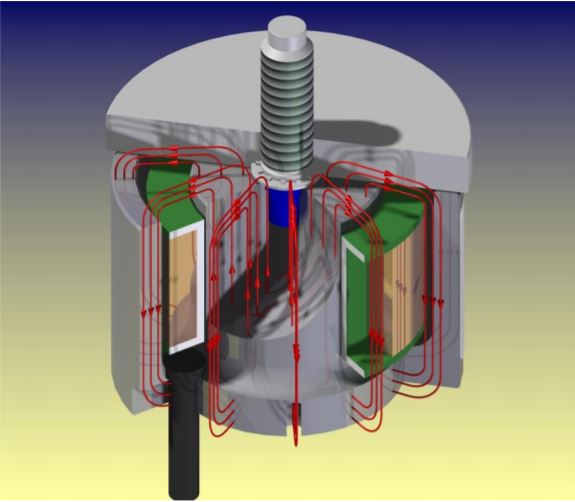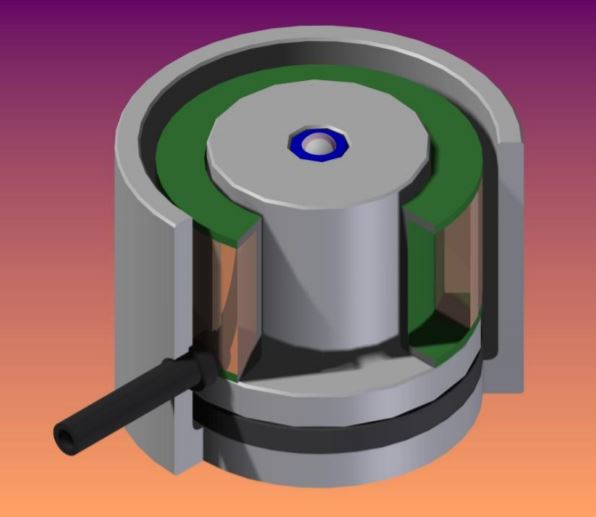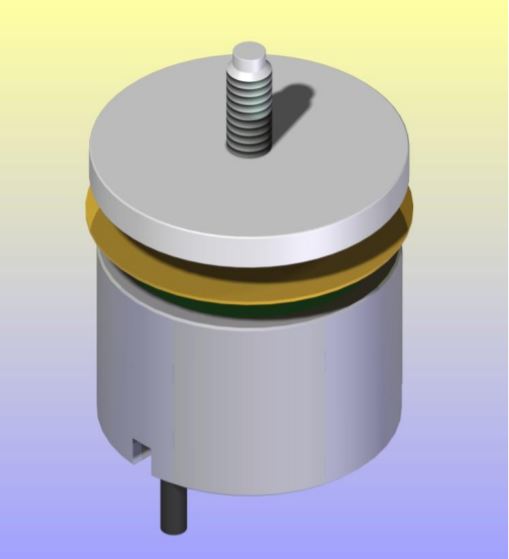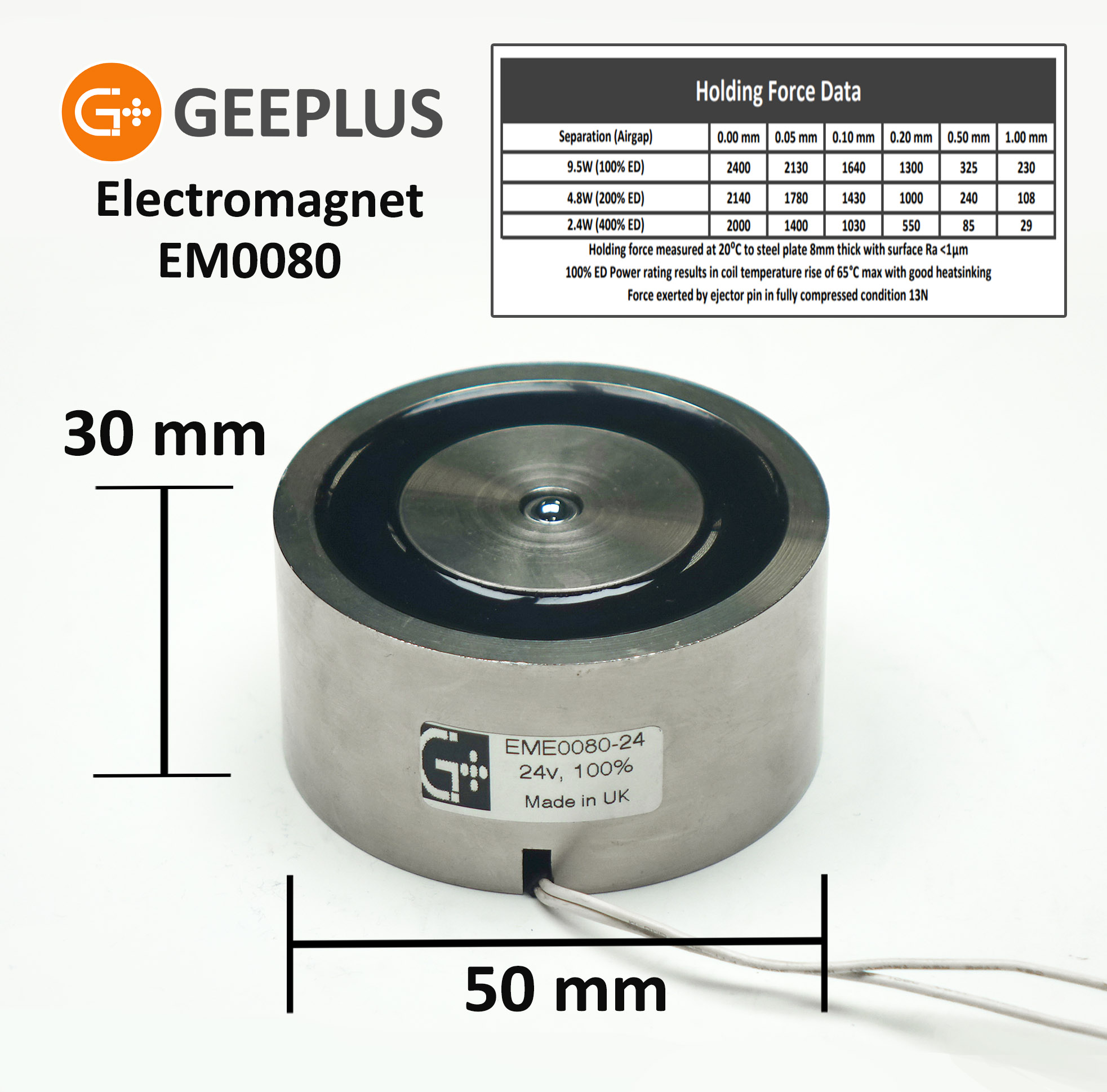Technical Library
What is an Electromagnet?
General Technical Overview
What is an Electromagnet? General Technical Overview
The electromagnet is a simple holding device. When energised it will attach itself to a flat steel surface with high force. When de-energised the attracting force is switched off. Related devices include the following:
• Holding Magnets – employ a permanent magnet to attach to a flat ferromagnetic surface with high force
• HMER (Holding Magnet Electrical Release) – combines the function of holding and electromagnet to hold to a flat ferromagnetic surface with high force when no power is applied, and release from the surface when energised
 Construction
Construction
The most common construction for electromagnets is illustrated, the device comprises of a steel pot core with a coil fitted in an annular groove in the face of the electromagnet, the coil is commonly potted in place for environmental protection and improved thermal contact with the pot.
The armature plate shown on top of the device is an optional accessory, as is the ejector pin fitted in the centre of the part illustrated.
The electromagnet is not intended to act over an extended distance, very high force is developed when in direct contact with a flat steel component, this force will reduce rapidly as separation between the electromagnet and steel surface increases.
The surface of the mating component should be made as flat as possible, and should be kept free of contamination which may cause separation of the two parts and consequent reduction in holding force.
When de-energised, some residual magnetism may remain, in cases where this is problematic a spring-loaded ejector pin can be fitted to the device to separate this from the electromagnet when de-energised.
 HMER – Holding Magnet Electrical Release
HMER – Holding Magnet Electrical Release
HMER devices incorporate a permanent magnet so that high holding force is developed to a flat ferromagnetic component without external power being applied. Power is applied to the device with reverse polarity to counter the field due to the permanent magnet and release the ‘keeper’ component.
Applications
Electromagnets find application as holding devices in machinery, as latching devices in security systems, and as door holdback devices in large buildings such as hospitals where doors are held open to permit easy access, but must be released to close if fire alarms are triggered, or in the case of power failure.
HMER devices are used in applications such as cash drawers, drug dispensing trolleys, or key boxes / safes in secure environments where a limited level of security is needed to trace use of materials or prevent misappropriation.
Due to the high forces and low power requirements, both constructions can find use as selection elements in applications where power is limited, or heat dissipation a problem such as shutter mechanisms, or selection mechanisms in textiles machinery.
In handling and installation, and in many of the applications where they are employed, the device can be subject to harsh treatment which can deform the surface and impair holding force. Geeplus electromagnets can be supplied with a hardened surface finish which makes them highly resistant to such damage, this will become standard for most such devices for future production.
Installation Precautions
It is important that the Electromagnet and/or armature plate have some compliance in mounting allowing them to align parallel and ensure forces act normal to the interface between them.

Testing
Electromagnets are tested with a shim of non-magnetic material inserted between holding face of the electromagnet and the armature (or a flat steel surface) to simulate a gap between the two. The electromagnet is energised, and increasing force applied until the two parts separate, the maximum force recorded is taken as the holding force.
The influence of the gap represented by the shim is similar to that of dirt, paint, or contamination on either surface, or to separation caused by damage to the surface. The influence of any likely contamination and separation this could cause should be considered when evaluating data on parts, in environments where contamination causing separation is likely, it may be desirable to choose a larger device which can achieve the required force at a separation corresponding to that caused by expected contamination.

Data
For most parts data is shown for 3 different current levels. The current value shown for 100% ED operation is the (HOT) current value achieved once the internal coil temperature stabilises with rated voltage applied, at a temperature approximately 60°C above ambient temperature (worst case), corresponding to an absolute coil temperature of 80°C in an ambient temperature of 20°C. The excitation current, power consumption, and holding force will be higher in the cold condition. The current value shown as 200% ED corresponds to excitation with half as much power, and 400% ED corresponds to quarter as much power, and are included to give some indication of performance at these reduced power levels if this is necessary due to high ambient temperature, or low supply power conditions.
Modification
The following modifications are possible to electromagnets:
• High Force / Efficiency – by grinding the mating faces of both electromagnet pot, and of the armature plate used to a very fine finish, the effective airgap can be reduced, enabling higher force to be achieved for a given input power.

![]()
+44(0)208 6567788
Geeplus Europe
Worldwide Customer Service
+1 803 549 6422
Geeplus Inc.
South Carolina (USA)
+81 45 662 9705
Geeplus Asia
Yokohama, Japan
Contact Geeplus
We're here to help - Contact Geeplus today!
Follow us on Social Media
Next Generation Motion Control Solutions!
Geeplus Headquarters:
Triple Two Centre, Tannery Close Beckenham, BR3 4BY, UK
©Geeplus Holdings 2019, All Rights Reserved
Privacy Policy
 Offices in Europe | USA | Asia
Offices in Europe | USA | Asia
